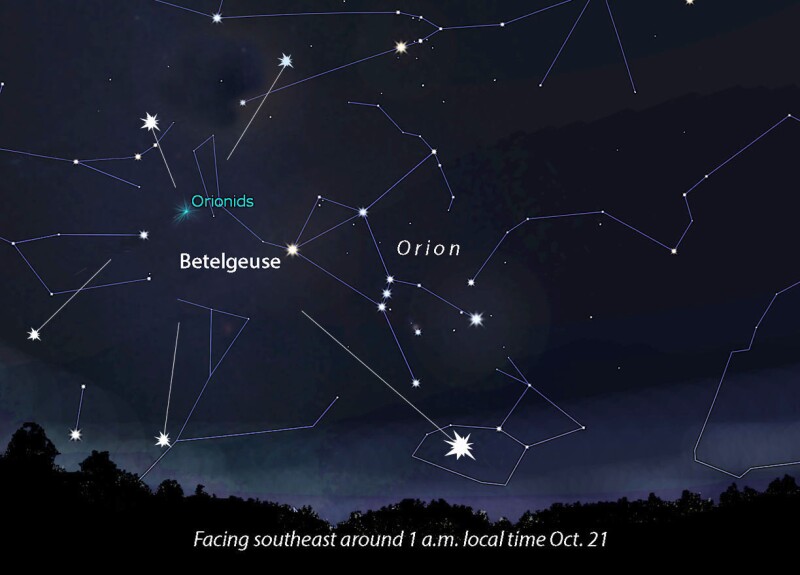As October unfolds, stargazers are in for a treat with the **Orionid meteor shower** peaking on the night of **October 20-21, 2023**. This celestial event, a result of Earth passing through debris left by **Halley’s Comet**, offers the chance to observe up to **20 meteors per hour**.
The Orionids are known for their swift meteors, entering the atmosphere at speeds exceeding **147,000 miles per hour** and producing bright streaks of light. The best viewing time will be between **1 a.m. and 6 a.m.** on the morning of the 21st when the constellation Orion rises high enough in the sky. Stargazers are encouraged to find a spot with minimal light pollution and face the darkest section of the sky for optimal viewing.
While the Orionid meteor shower is the highlight, two binocular comets are also making appearances this month. **Comet Lemmon**, now visible in the northwestern sky, can be found approximately a fist’s width above and to the right of the bright star **Arcturus**. This comet features a dense, fuzzy head with a wispy tail and can be observed without optical aids under ideal conditions. It becomes visible about **90 minutes after sunset** and remains in view for about **one and a half hours**.
In addition, **Comet SWAN (C/2025 R2)** is also gracing the southwestern evening sky near the border of the constellations **Sagittarius** and **Serpens**. While slightly dimmer than Comet Lemmon, it can be seen using binoculars from a reasonably dark location at nightfall. Stargazers can locate it by navigating from the stars **Nunki**, **Sabik**, and **Altair**.
With no bright moonlight to interfere, the conditions for observing both comets and the meteor shower are favorable. As **October 21** approaches, prepare to bundle up; temperatures may drop near freezing during the late-night hours. A comfortable chair and plenty of patience will enhance the experience, as viewers may need to wait several minutes between meteor sightings.
As the universe showcases its wonders, this October presents an excellent opportunity for amateur astronomers and enthusiasts alike. Whether you’re tracking meteors or gazing at comets, clear skies and warm blankets can make for a memorable night under the stars.






